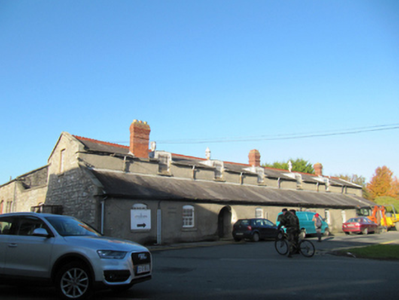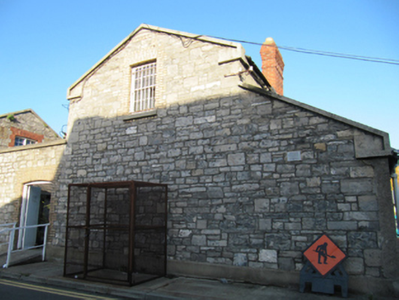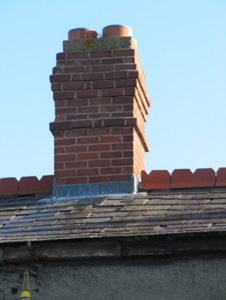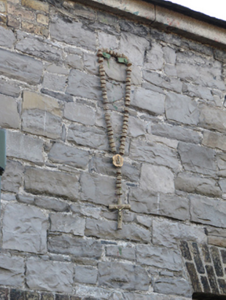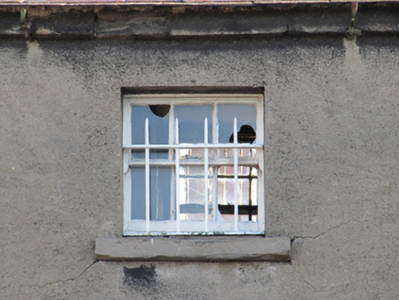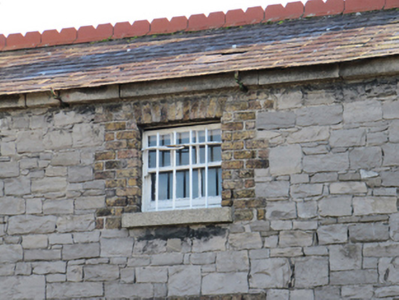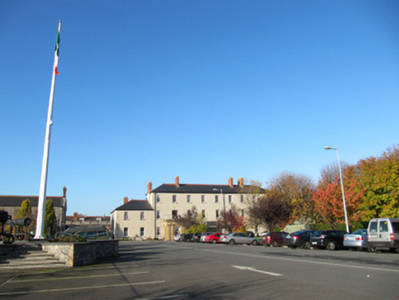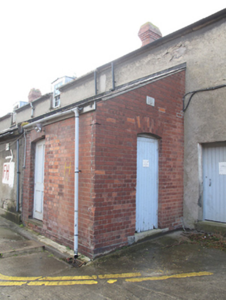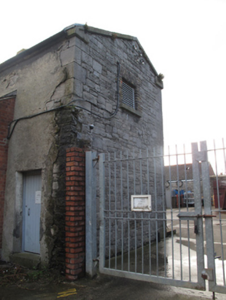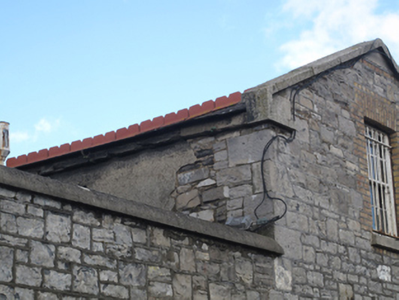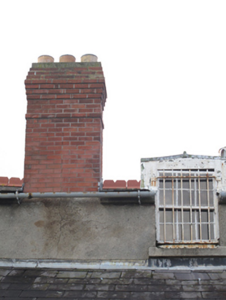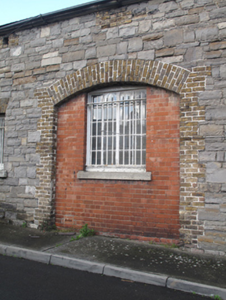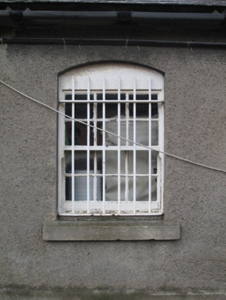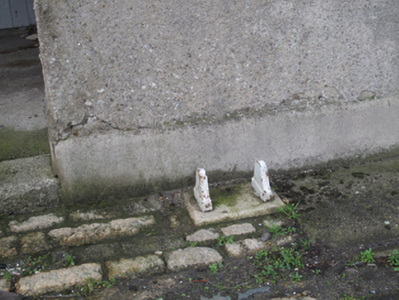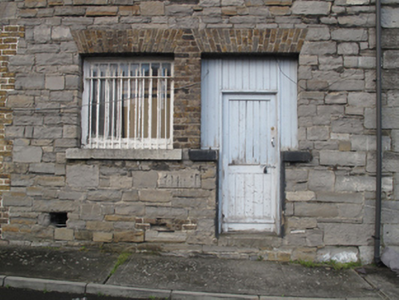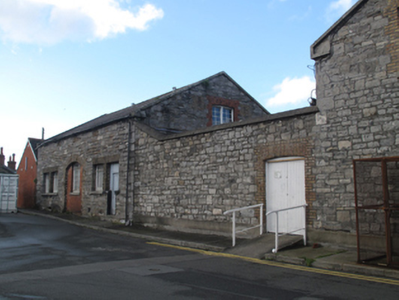Survey Data
Reg No
50081016
Rating
Regional
Categories of Special Interest
Architectural, Social
Previous Name
Portobello Barracks
Original Use
Store/warehouse
In Use As
Store/warehouse
Date
1800 - 1820
Coordinates
315102, 232206
Date Recorded
18/11/2013
Date Updated
--/--/--
Description
Attached five-bay single-storey with half-dormer attic store, built c.1810, having full-length lean-to to front (east) elevation, two-storey outbuilding set perpendicular to rear (west) elevation, and masonry range parallel to main range. Pitched slate roof having red brick chimneystacks with some clay chimney pots, metal vents, terracotta ridge cresting, cast-iron rainwater goods, calp limestone eaves course and half-dormer windows. Raised gables having calp limestone coping. Roughcast rendered walls with render plinth course, roughly coursed rubble calp limestone to north and south elevations and to perpendicular outbuilding, snecked calp limestone to rear elevation, red brick to parallel outbuilding to rear. Square-headed window openings, some with red brick surrounds, masonry sills, three-over-three pane and six-over-six pane timber sash windows, and cast-iron bars. Segmental-headed window openings to front, with granite sills, six-over-six pane timber sash windows, and cast-iron bars. Round-headed opening to front, with recessed porch having timber battened door. Segmental-headed door opening to wall to rear of main building, having yellow brick surround, and timber battened door.
Appraisal
Portobello Barracks was constructed at the beginning of the nineteenth century as a cavalry barracks. It was taken over by Irish Troops in 1922, and became the Headquarters of the National Army, under the leadership of Michael Collins. In 1952 it was renamed after Cathal Brugha, Chief of Staff of the Irish Republican Army during the War of Independence, and Minister for Defence in the first Dáil. The building retains much of its early form and fabric, with timber sash windows lending a patina of age and well-executed stone work providing textural contrast with the render façade.

